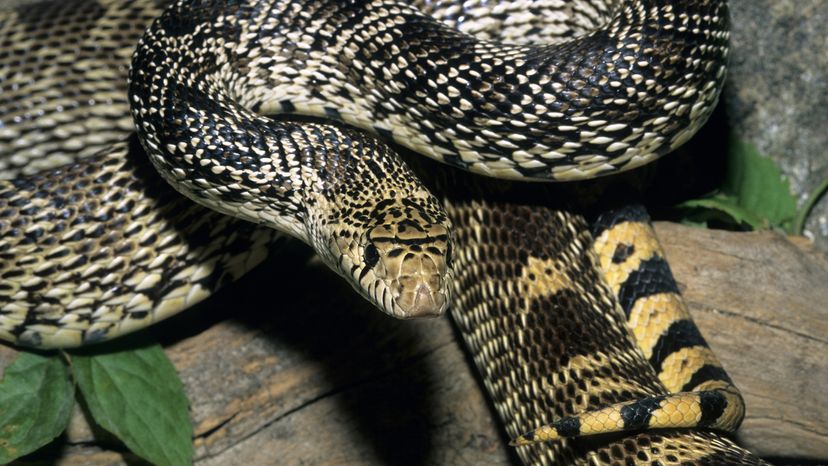
Bull snakes (Pituophis catenifer sayi), sometimes generalized as gopher snakes, are among the largest and most powerful nonvenomous snakes in North America. The heavy-bodied bull snake is often mistaken for a rattlesnake due to its size and defensive behaviors, but it's completely harmless to humans.
When threatened, bull snakes might hiss loudly, flatten their heads and even mimic a rattlesnake’s rattle by vibrating their tails against dry leaves or grass.
Advertisement
Bull snakes play a vital role in controlling populations of small mammals and other prey, making them important members of their ecosystems. Ranging from northern Mexico to southern Canada, these adaptable snakes thrive in a variety of habitats.